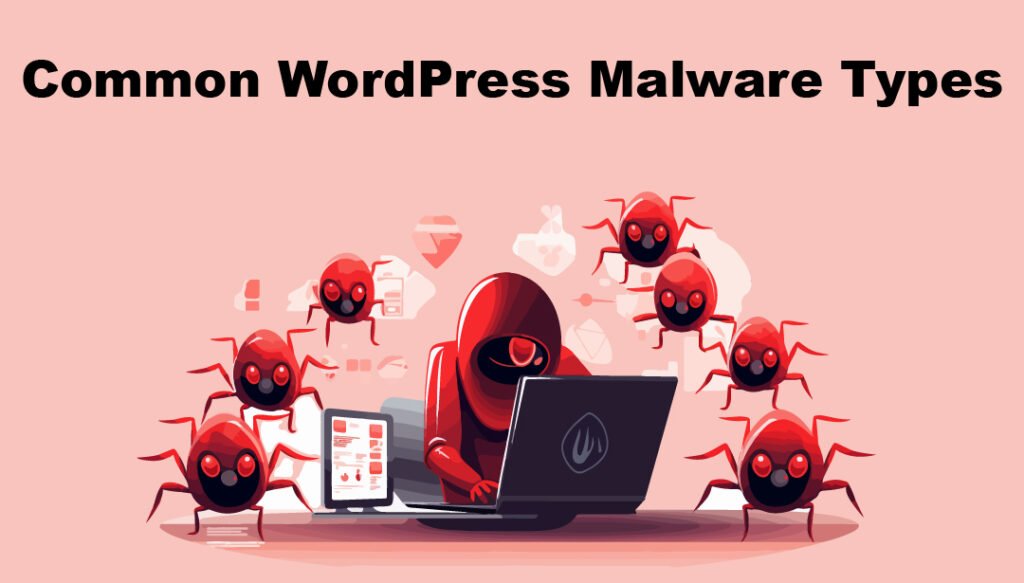
Common WordPress malware types include backdoors, phishing, and SEO spam. Removal involves scanning with security plugins and manually deleting malicious files.
WordPress sites often become targets for hackers due to their popularity. Understanding common malware types is crucial for effective protection. Backdoors allow unauthorized access, while phishing tricks users into revealing sensitive information. SEO spam manipulates search engine rankings. Recognizing these threats helps in timely detection and removal.
Use reliable security plugins to scan and clean your site. Regular updates and backups are essential for maintaining security. By staying vigilant and proactive, you can safeguard your WordPress site from potential malware attacks.

Identifying Malware
Understanding common WordPress malware types and effective removal methods is essential for website security. Detect malicious code, rogue plugins, and unauthorized access to safeguard your site.
Signs Of Infection
Your site may load very slowly. You might see unexpected pop-ups or ads. Strange admin accounts could appear. The site may redirect to unknown pages. Search engines may label your site as unsafe. Your hosting provider might suspend your site. These are all signs of infection.
Common Entry Points
Malware often enters through outdated plugins. Weak passwords are also a common entry point. Infected themes can bring malware too. Shared hosting environments are risky. Poorly coded scripts can introduce threats. Common entry points need constant monitoring to keep your site safe.
Backdoors
Backdoors let hackers enter your site. They hide in your files. Scanning tools help find them. Use a tool like Wordfence. Check your logs for strange activity. Look for unknown files. Monitor your site’s performance. Slow sites can mean malware. Regular scans keep your site safe.
First, update your WordPress. This removes known issues. Next, delete any unknown files. Reinstall core WordPress files. This replaces infected ones. Use a tool to clean your site. Wordfence is good for this. Finally, change all passwords. This stops hackers from getting back in.
Phishing Schemes
Phishing schemes often appear as legitimate emails or messages. They trick users into giving sensitive information like passwords or credit card numbers. Look for unusual sender addresses and generic greetings in emails. Misspellings and urgent requests are also common signs. Never click on suspicious links or attachments. Always verify the source before taking any action.
Use a reliable email filter to block phishing attempts. Educate users about common phishing tactics. Implement two-factor authentication to add an extra layer of security. Regularly update your WordPress plugins and themes. This reduces vulnerabilities. Always backup your site to avoid data loss. Monitor your site for unusual activities. Consider using a security plugin to scan for threats.
Malicious Redirects
Malicious redirects compromise WordPress sites, sending visitors to harmful websites. Swift detection and removal are crucial to maintain site integrity. Understanding common WordPress malware types helps in effectively combating these threats.
Impact On Users
Malicious redirects can harm users. They can send users to dangerous websites. These websites may steal personal information. Users might see unwanted ads. This can ruin the user experience. It can also lower trust in your site. Search engines may blacklist your website. This can reduce your site’s traffic.
Cleaning Up
Find the source of the redirect. Check your website’s files and database. Remove any unknown code. Use security plugins to scan your site. Change all passwords. Update WordPress and all plugins. Backup your website regularly. Always use strong passwords. Educate users about safe browsing.
Database Injections
Database injections are harmful. They can steal sensitive information. Look for strange activities in your database. Sudden changes in data are signs of trouble. Suspicious login attempts can also indicate an issue. Check for unexpected error messages. Hackers use these to understand your database. Always monitor your WordPress site closely.
Use strong passwords for database access. Update your WordPress plugins regularly. Install security plugins to protect your site. Back up your data frequently. Limit database user permissions. Ensure only trusted users have access. Validate all user inputs carefully. This prevents harmful code from entering your database. Encrypt sensitive data to keep it safe. Regularly scan your site for vulnerabilities.
Frequently Asked Questions
How To Remove Malware From WordPress?
To remove malware from WordPress, update plugins, themes, and core files. Use a security plugin to scan for malware. Delete infected files and restore from a clean backup. Change all passwords and update security settings.
How Do I Identify And Remove Malware?
Identify malware by running antivirus scans and monitoring unusual system behavior. Remove it using reputable antivirus software.
How Do I Manually Remove Malware From My Website?
To manually remove malware from your website, follow these steps: scan your site, delete infected files, update software, change passwords, and monitor for suspicious activity.
Conclusion
Protecting your WordPress site from malware is crucial for security. Regular scans and updates can prevent attacks. Use reliable plugins and follow best practices to keep your site safe. Addressing malware swiftly ensures your website remains secure and trustworthy. Stay vigilant and proactive in your website maintenance.



